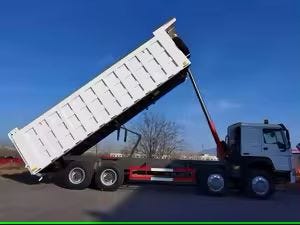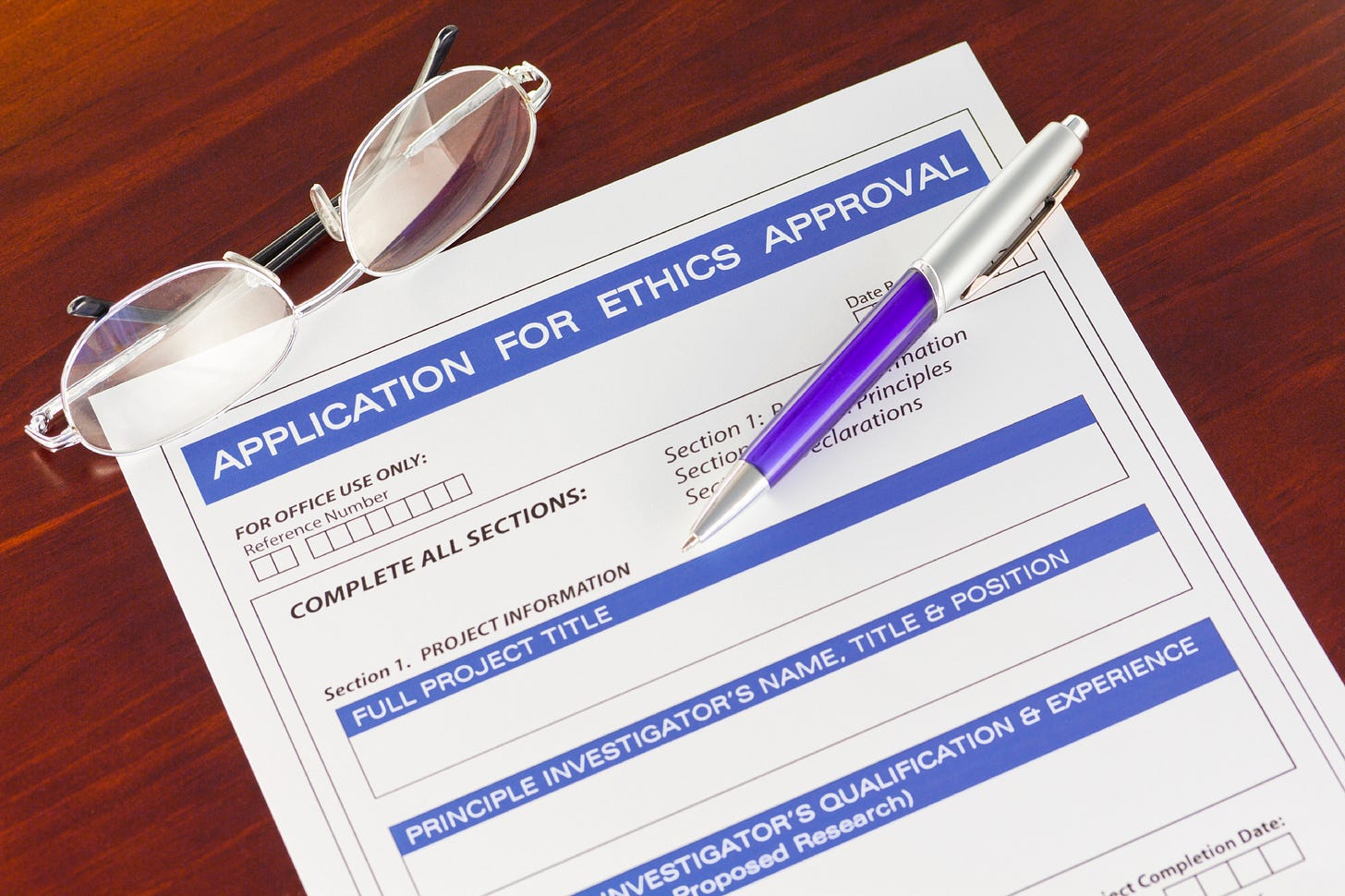1 Week, 7 Stories #18
Climbing a mountain of e-waste, navigating an ethical question, and ploughing the urban farm fields.
Every edition features 7 stories, from the past week. I’ll draw on my background in media, journalism, agriculture, biotech, and renewable energy to come up with an interesting selection and do my best to offer some context.
Sometimes built around a theme, sometimes random, but with a Canadian twist.
Are you happy today? If you are in Finland, there is a good chance your answer is yes. If you are in the United States, perhaps less so. The annual World Happiness Report from the University of Oxford Wellbeing Research Centre came out this week. It uses data from a Gallup World Poll and takes into consideration “life expectancy, social bonds or having someone to count on, and freedom from corruption”. Out of 143 countries, Canada was down a couple of notches to 15th and the U.S. finished out of the top 20 (now at 23) for the first time since the index was started in 2012. When broken down by age though, Canada falls to 58th if you are under 30.
An article in Phys.org that also looked at the results says that we might be measuring happiness wrong. While money may not buy you happiness, the phrasing in the survey may push people to think more of power and wealth. There is evidence in the report that supports the idea that it is not straight-out wealth that makes the difference. It is how income along with education, health care, social acceptance, and trust are distributed.
“People are happier living in countries where the equality of happiness is greater.”
Afghanistan, Lebanon, Lesotho, Sierra Leone and Congo were the bottom ranked countries and maybe that is where we should be turning our attention instead of wondering why we only finished 15th.
On the chore list this week is to take some e-waste to Uptown Recycling in Calgary. The simplest definition for e-waste is anything with a plug or battery such as that older model phone sitting in a drawer, an unused appliance not fit for re-sale or donating, an out-of-service electric razor, or even e-cigarettes. A new report from the United Nations Institute for Training and Research said that globally, we churned out 62 million tonnes (about 68 million US tons) of e-waste in 2022. Sound like a lot? It is. If you were to load up the average dump truck (like the one below) with our discarded electronic junk, you would need enough trucks lined up bumper-to-bumper that would encircle the entire planet to move it all. If that isn’t scary enough, only 22% of that was collected and recycled. The rest ends up in “either in dumpsites or mercilessly deposited anywhere else” with devastating effects on our environment.
A University of Waterloo study in the Journal of Hazardous Materials last year found that Canada has tripled its e-waste since 2000 to more than a million tons or about 25.3 kg per person. One of the report’s authors suggested that the findings could point to revenue generation opportunities to deal with e-waste and to tap the potential of “urban mining”. You could even view your electronic waste as a “mine of resources”. One way to help cut e-waste is by adding another ‘R’ to the Reduce-Reuse-Recycle mantra. Repair. I have had to dispose of some e-waste over the years simply because there was no way to get them repaired. Last year Canada took a step towards the right to repair (federally and provincially) - a step we can all identify with.
I recently saw a video of an automated gas pump that used AI and robotics to take off your car’s gas cap, insert the gas nozzle, fill up the car, and return the nozzle to the pump. It was incredibly slick, and I was impressed. Until it struck me that it was an incredible waste of material resources, to either replace a gas station attendant or save the driver the onerous task of getting out of their vehicle and doing the old self serve. No sooner had I wondered why on that one, than a Bloomberg headline came up. A Japanese Startup Is Shipping $89 Strawberries, $120 Melons. Later while looking over TechCrunch I see DoorDash begins piloting drone deliveries in the US. And Costco is selling gold bars (Albeit little ones, not the ones in heist movies). Vox suggests that we are hitting all time highs in our pursuit of luxury goods like a thousand-dollar pair of sneakers. Meanwhile Gen Z is tired of seeing influencers sent on extravagant brand trips.
Which takes us back to our first 2 stories. We are less happy when we see inequity in wealth and resources and we are drowning in consumer waste. And there is more trouble ahead as Canadian consumers were awash in $2.4 trillion dollars in debt to kick off 2024. Back to those 4 Rs.
The last place you would expect to find a farm full of cucumbers and green peppers is over a Walmart. But there is a 127,000 square foot urban farm over a Walmart in Montreal, which officially opened this week with its first harvest ready to be distributed to its Quebec subscription customers. It is the 5th such facility for Lufa Farms and it is part of a growing trend to shorten the ‘farm to fork’ journey for fresh food. While the Lufa farms are enclosed high-tech facilities, urban farming can take many forms. Earlier this month, the City of Edmonton started a public survey to see what people have to say about urban farming ranging from produce to hens to bees. The idea is to move beyond community gardens and encourage small businesses opportunities or social enterprises and to sell the ag products to consumers (which community gardens do not). Experiments in urban farms which deliver fresh food locally will surprise you when you see ventures such as the nonprofit Oka Farms in Brooklyn, New York which has put aquaponics to work. Aquaponics mixes the raising of fish with plant production. Nutrients from the fish waste help fertilize the plants and ideally enough fish are raised to add substantial value to the mix. Oka Farms uses the technique to its full advantage to raise vegetables and herbs along with carp, catfish, crawfish and freshwater prawns. Take a look around your city or town and see what treats might be waiting for you.
Biotechnology can accomplish amazing cures that seem to be drawn from science fiction or depending on your point of view, B-rate sci-fi movies. In the United States more than 103,000 people are on the organ transplant wait list. In Canada even though there were 3,000 organ transplants last year there were still 4,500 people on our waitlist for a life-saving organ. One possible solution to the demand-supply problem is the use of organs from genetically modified animals. In Boston on March 16th, a man with end-stage renal disease received a new kidney from a genetically modified pig. It is expected to last 2 years. Also this week, a clinically dead man in China received a liver – also from a genetically modified pig. It functioned for 10 days before the experiment was ended. The practice of xenotransplants (animal to human) seems to be a viable practice but it raises ethical questions. One of which is the large-scale breeding, raising and killing of genetically modified pigs as outlined in this BMJ Journal of Ethics article which may well send your moral compass spinning.
Easter egg hunts will be more expensive this year and not just because of the inflationary pressures hitting everything in our basket full of food. This one is largely because of climate change hitting cocoa crops from both ends of the weather spectrum. Drought in West Africa and intense rain in Ivory Coast and Ghana. An outbreak of Cocoa Swollen Shoot Virus Disease has exacerbated the problems leaving consumers with higher prices for the end products and cocoa farmers hurting from decreased production. In the past the industry has been guilty of expanding through rapid deforestation and unfair labour practices but the World Cocoa Foundation has been taking steps since 2017 to address the problems. As we learned from the rise of Fairtrade coffee, we now must face the bittersweet reality of how our chocolate of choice is grown, processed, shipped, and sold.
Lighthouses have been around since there were sailing vessels with crews who needed to know where the shore was to avoid running aground. The first known one was the Pharos of Alexandria which was built around 280 BC and the light source to mark the spot was a huge open fire. We’ve come a long way since then with automated technology and a brief foray into nuclear-powered lighthouses by the Soviets. Nova Scotia’s Sambro Island Lighthouse is the oldest surviving lighthouse in the Americas but right behind it is one on Seal Island (off the coast of Nova Scotia) and that 200-year old building was in the news this week. The Canadian Coast Guard and Fisheries and Oceans Canada say it is too expensive to maintain and will be replaced by a steel tower as the primary navigational aid. The Seal Island Lighthouse Preservation Society wants the historic building saved as part of Nova Scotia’s long history with lighthouses. The first one in Canada (well it was not Canada at the time) was built at Louisbourg in 1734. Historically lighthouses and lighthouse keepers, maintained beacons for coastal navigation, fog alarms, provided a place to find relief in storms, and later were a key piece of maritime radio communication. When GPS and automated marine buoys came along, the traditional role of the lighthouse changed or disappeared. However the romance, cache, and historical significance of lighthouses, has resulted in many of them being saved or, like the Seal Island lighthouse, campaigns are underway. Last month in North Yorkshire, UK, £252,000 (about $434,894 Cdn) was committed to restore the Whitby lighthouse built in 1831. In 1999 the Cape Hatteras lighthouse in North Carolina was threatened by coastal erosion, so was picked up and moved 2,900 feet inland. There is even a “Doomsday” lighthouse list to draw attention to the most endangered structures.
If you like the idea of living in an old lighthouse and would like to buy one, many of the them in the U.S. are being given away or sold at auction with the condition attached that they be maintained “in keeping with federal and local requirements”. And in Canada? Yes, you might just be able to buy one as well. Just be sure to read the fine print.
Or maybe just marry one:
I dream of living in a lighthouse, baby,
Every single day.
I dream of living in a lighthouse,
A white one by the bay.
So if you want to make my dreams come true,
Go be a lighthouse keeper, do!
We could live in a lighthouse,
A white one by the bay-ay-hay.I Want to Marry a Lighthouse written and recorded by Erika Eigen
© Sony/ATV Music Publishing LLC
Read, comment, subscribe, and share this newsletter.
I’m available for contract and freelance work with not-for-profits and charities. With 40 years of experience behind me and lots of time ahead of me, I’m here to help you make a difference in your media relations, public relations, and general communications needs.



